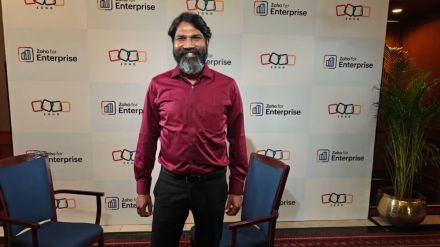Zoho’s homegrown messaging platform Arattai aims to provide alternatives to global apps such as WhatsApp and Telegram. CEO Mani Vembu tells Ojasvi Gupta during an interaction that since the company owns its tech stack, costs can be kept in check. Excerpts:
What is the thinking around a ‘Made In India’ software suite for Zoho? How does the cost dynamics remain when building an indigenous presence?
The Zoho brand was started in 2005, and with that, we became one of the first SaaS (software as a service) vendors from India–certainly the first from Chennai. Many former employees have gone on to create successful SaaS companies in Chennai, creating an ecosystem that has turned the city into a SaaS hub. We believe not just in ‘Made in India’ but ‘Made in Rural India’. Staying away from large cities helps us keep our operational costs low, providing a longer runway for projects that require long-term R&D efforts.
All our products have a common technology stack, which we have built from ground up. Therefore, benefits of R&D in one area can quickly be leveraged by products of different functions, and help create a more seamless experience for customers. Additionally, as we own our tech stack, it helps us keep costs in check.
How do you plan to cope with the problems resulting from the higher server load?
The sudden surge in Arattai downloads was a pleasant surprise for us. We have had to scramble to ramp up the infrastructure and speed up some of the features and security aspects, which we had believed we had two more months to do. We are now able to sustain the influx of users, and we can see the usage is increasing. We have a long way to go. Our current focus is on ensuring that the users who have signed up remain on the platform.
How would you ensure mass adoption and network effect, so that Arattai can be on the lines of WhatsApp and Telegram?
When users see the benefits and ease-of-use Arattai brings them, users will be more open to adopting it. From the current surge in Arattai downloads, we can clearly see that there is an appetite among Indian users for an alternative solution which is homegrown and tackles challenges unique to the country. Network effects cannot be planned. It just happens if there is a demand in the market. Our focus is only to build a product that values user needs, prioritises privacy, and can be trusted by all. Some healthy competition is always welcome to keep businesses innovating.
How does Arattai’s Android TV version act as an edge for the platform over other conversation tools?
We had identified a gap: calls with family should not be tied just to a system or squeezed into a mobile screen, as happens often. Our aim is to bridge this gap, not with a completely new app but by using something everyone would be familiar with. This gave us the idea to bring the meeting experience on the big screen, allowing close ones to talk and see each other during family get-togethers. With Arattai, we want to focus on solving issues. More than an edge it’s another way users can connect with each other. Our real edge is in ad-free revenue model, and our privacy first approach.
How do you ensure full encryption services for messaging at Arattai?
The calls, both video and audio, are already end-to-end encrypted. The text E2EE is under testing and will be rolled out by the end of October or early November.
